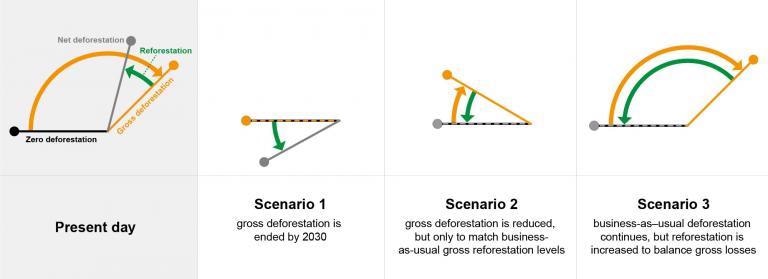Reviewed by Alex SmithJun 6 2022
An agreement that was signed at the COP26 by the Glasgow Leaders’ Declaration on Forests and Land Use constitutes a commitment by leaders representing more than 85% of the world’s forests to halt and revoke deforestation and land degradation by 2030.

Image Credit: Adam Islaam/ International Institute for Applied Systems Analysis.
However, the study questions if the declaration’s ambitions are highly ambiguous? A global research group analyzed this question.
At the latest annual UN climate change conference—COP26—conducted in Glasgow in early November 2021, 141 countries including Canada, Brazil, China, the Democratic Republic of the Congo, Indonesia, Russia, the UK, and the US, jointly signed a pledge to bring deforestation to an end throughout the globe by 2030.
The Glasgow Leaders’ Declaration on Forests and Land Use is considered to be one of several agreements that have been specially designed to keep the goals of the Paris Agreement within reach and inseparably tie safeguarding the world’s forests to the combat that is happening against climate change. Therefore, the declaration has been hailed by a few as one of the most considerable forest and land use pledges made at the time of COP26.
But, in their new opinion piece that was reported recently in the journal Proceedings of the National Academy of Sciences of the United States of America (PNAS), IIASA scientist Thomas Gasser and his collaborators, Philippe Ciais from the IPSL Sciences Laboratory of Climate and the Environment in France, and Simon Lewis from the University of Leeds and University College London in the UK indicate that one critical detail seems to have been neglected from the pledge: Will the deforestation it targets to halt be gross or net?
According to the scientists, there might be a difference in the gross and net deforestation, because, in the majority of the countries, deforestation and reforestation are processes that are constantly occurring simultaneously.
Researchers stated, “The distinction matters, because differing interpretations of how countries can ‘end deforestation’ significantly impact future carbon dioxide emissions. Put simply, ending gross deforestation would be a major step forward for the climate. But considering only net deforestation could be anecdotal, and even be detrimental to biodiversity.”
With that fact, the scientists observe that it is significant to comprehend that halting deforestation in 2030 does not imply having zero CO2 emissions in 2030. This is a result of the complicated dynamics of the carbon cycle.
For the significance of the distinction between gross and net forest area loss to be illustrated, the researchers came up with three scenarios that satisfy the commitment to stop forest area loss by 2030.
In such scenarios, the team demonstrated a world where gross or net deforestation in signatory countries comes to a halt by 2030. The first scenario models a situation in which gross deforestation in signatory countries is ended by 2030, while the second delves into a world where gross deforestation in signatory countries is decreased. However, it is done only to the extent where it corresponds to their business-as-usual gross reforestation levels.
In the final scenario, the signatory countries remain with business-as-usual deforestation but concurrently increase their forest area by coming up with new plantations to offset their gross losses.
While all three of such scenarios seem to conform with the declaration, the authors observe that they produce highly diverse net carbon gains. This displays that the level of emissions reductions (if any) relies on if gross or net deforestation has been decreased to zero.
The first scenario sequesters a considerable amount of CO2 by 2050, whereas the second one just does half as much, and no considerable carbon sequestration has been produced by the last scenario.
The most important takeaway of our modeling exercise is that the Glasgow Leaders’ Declaration on Forests and Land Use is too ambiguous. We must therefore monitor the signatory countries' actions to see whether it will actually deliver on its promises or be just another set of empty promises like the 2014 New York Declaration on Forests that no one remembers.
Thomas Gasser, Researcher, International Institute for Applied Systems Analysis
Journal Reference:
Gasser, T., et al. (2022) How the Glasgow Declaration on Forests can help keep alive the 1.5 °C target. Proceedings of the National Academy of Sciences. doi.org/10.1073/pnas.2200519119